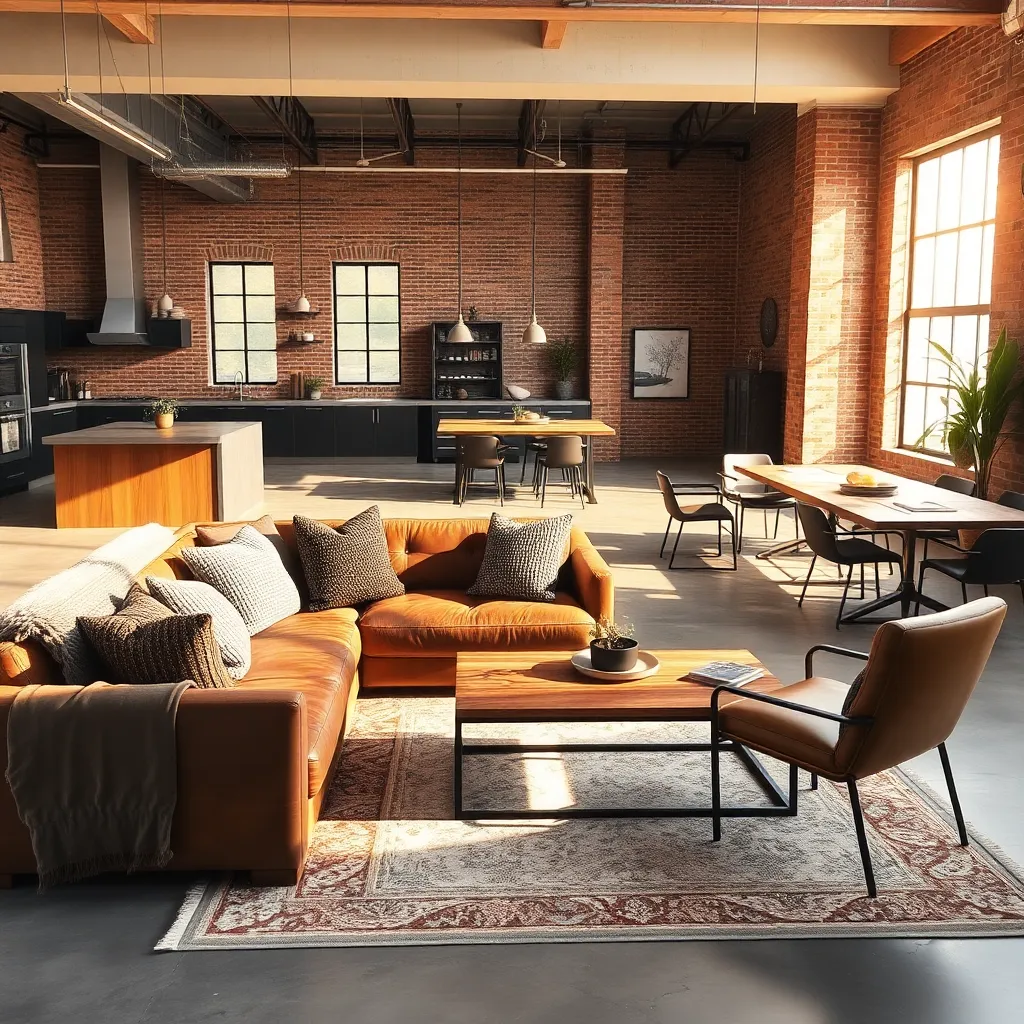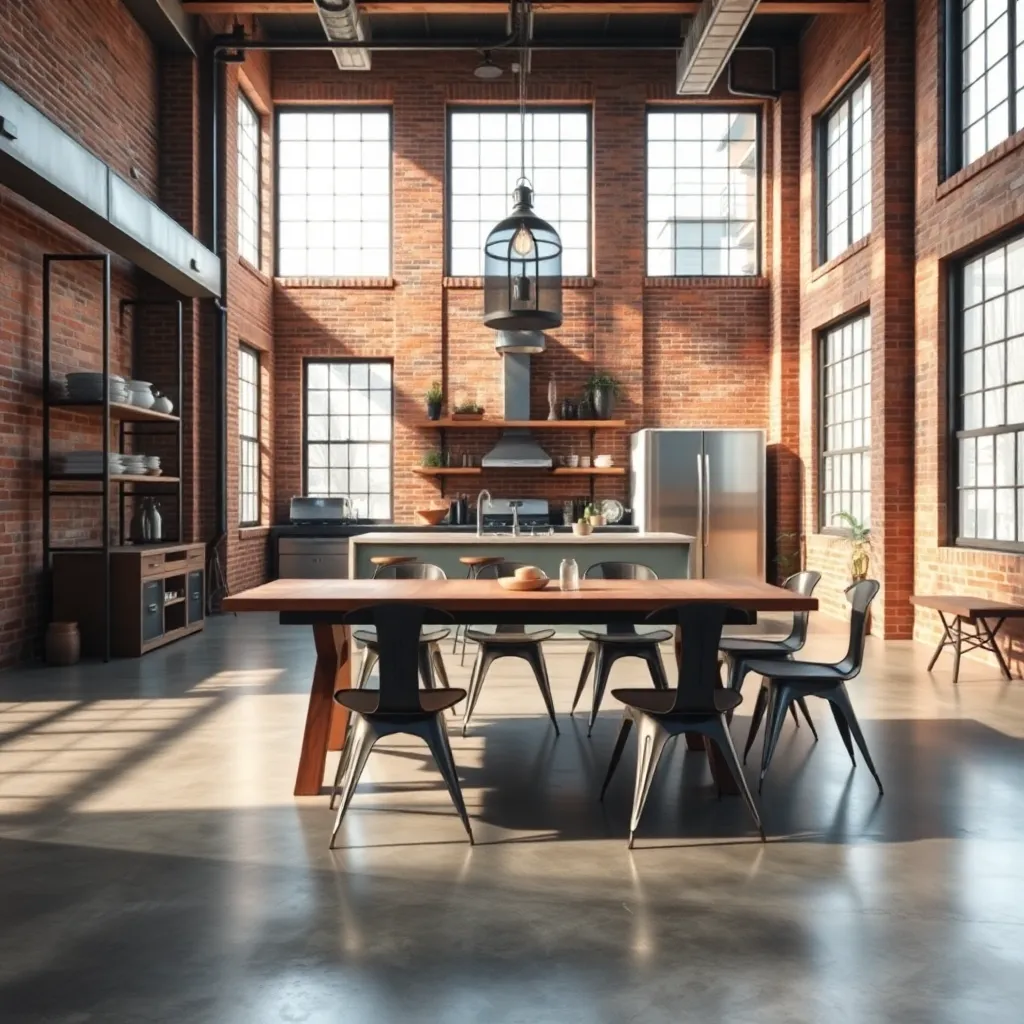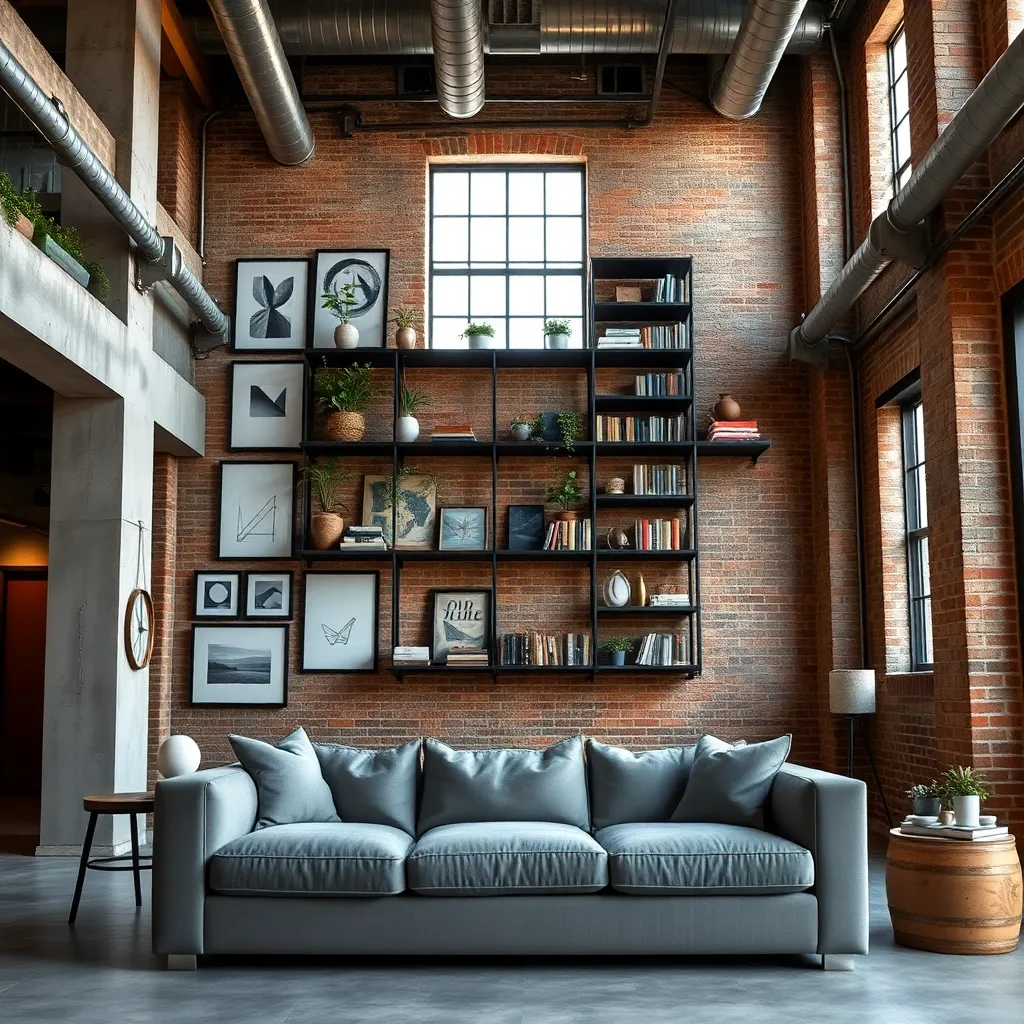Welcome to the captivating world of industrial loft design, where raw, unrefined beauty meets the comforts of modern living. Whether you’re a newcomer to the realm of interior design or a seasoned decorator seeking fresh inspiration, this style offers a unique blend of history and contemporary flair that can transform any space into a masterpiece of creativity and functionality. Industrial loft design isn’t just a trend; it’s a celebration of architectural heritage and an invitation to reimagine the potential of your living environment.
As you explore this dynamic design approach, you’ll discover how to artfully incorporate elements such as exposed brick walls, open floor plans, and reclaimed materials into your home. This article will guide you through the nuances of industrial design, offering practical tips and creative ideas to help you achieve that perfect balance between vintage charm and modern aesthetics. From selecting the right lighting fixtures to choosing the ideal furniture pieces, you’ll gain the confidence to infuse your personal style into this distinctive design.
In the pages that follow, we’ll delve into the origins of industrial design and its evolution into the beloved style it is today. You’ll learn how to embrace imperfections as part of the aesthetic and how to create a cohesive look that feels both inviting and sophisticated. Whether you live in a sprawling urban loft or a cozy suburban home, industrial design principles can be adapted to suit any space, making it a versatile and enduring choice for anyone passionate about creating a unique and welcoming atmosphere.
Embracing Open-Plan Living Spaces

Open-plan living spaces are a hallmark of industrial loft design, offering a seamless flow between areas. To maximize this layout, consider using a consistent color palette, such as warm neutrals or cool grays, which can help unify the different zones and create a cohesive look.
Furniture selection plays a critical role in defining areas within an open-plan space. Opt for multi-functional pieces like modular sofas or extendable tables, which can adapt to various needs and functions while maintaining the loft’s airy feel.
Strategic placement of rugs can help delineate specific zones without the need for physical barriers. Choose large area rugs in textured materials like jute or wool to add warmth and define spaces such as the living or dining area.
For a touch of personality and contrast, incorporate industrial elements like metal or exposed brick. These materials can serve as focal points, and pairing them with softer textures like linen or velvet can create a balanced and inviting atmosphere.
Choosing Raw Material Finishes

When designing an industrial loft, choosing the right raw material finishes is crucial to achieving an authentic look. Start by incorporating exposed brick walls, which provide a rugged, textured backdrop for your space.
Consider utilizing concrete flooring, which adds a sleek, modern edge and pairs beautifully with industrial elements. This low-maintenance option is perfect for high-traffic areas and can be softened with area rugs for added warmth.
Metals like steel and iron are staples in industrial design, so incorporate them into your fixtures and furniture. Opt for steel-framed furniture or iron light fixtures to enhance the loft’s urban feel and create a cohesive look.
To add variety and depth, mix different finishes such as weathered wood with polished metals. This contrast not only enhances the industrial aesthetic but also creates a layered, inviting atmosphere.
Incorporating Industrial Lighting Fixtures

To effectively incorporate industrial lighting fixtures into your loft, start by focusing on materials like metal and concrete. These materials not only complement the raw finish of industrial spaces but also add a bold and edgy look that enhances the overall aesthetic.
Consider using pendant lights with exposed bulbs to create a dramatic focal point in any room. Position them strategically over dining tables or kitchen islands to provide both task lighting and a stylish statement.
For a more advanced approach, mix different types of industrial fixtures to add depth and variety. Combine track lighting with wall-mounted sconces to layer the lighting and create a dynamic atmosphere.
When it comes to color, stick with a neutral palette of black, gray, or bronze to maintain the industrial vibe. These colors allow the fixtures to blend seamlessly with other elements like raw brick walls and reclaimed wood furniture.
Blending Modern and Vintage Decor

Blending modern and vintage decor in an industrial loft can create a space that feels both timeless and innovative. Start by selecting a few key vintage pieces, such as a reclaimed wood dining table or an antique leather armchair, which will add character and warmth to your space.
To complement these vintage pieces, incorporate modern elements with clean lines and sleek finishes. Consider a minimalist metal coffee table or a contemporary abstract art piece to balance the rustic charm of your vintage selections.
Colors play a crucial role in harmonizing different decor styles. Opt for a neutral color palette with shades like gray, beige, and white to serve as a backdrop, allowing both modern and vintage elements to shine without clashing.
Advanced decorators might experiment with mixing materials to enhance the visual interest of the space. Pairing a vintage brass lamp with a modern concrete side table can create a striking contrast that emphasizes each piece’s unique qualities.
Maximizing Vertical Space Effectively

Maximizing vertical space in an industrial loft design can dramatically enhance both functionality and aesthetics. Begin by installing tall shelving units that reach up to the ceiling, providing ample storage while drawing the eye upward, emphasizing the room’s height.
Consider using ladder shelves made of metal or reclaimed wood to maintain an industrial vibe. These not only create additional storage but also serve as a perfect backdrop for displaying a mix of vintage and modern decor, connecting with the previous section’s theme.
Another effective approach is to incorporate hanging plants or pendant lights to make use of overhead space without cluttering the floor. Opt for fixtures in metallic finishes to complement the industrial style while adding warmth and texture to the room.
For a more advanced strategy, consider installing a mezzanine level if the ceiling height permits. This not only increases living space but also provides a unique opportunity to create a cozy reading nook or an additional sleeping area, making the loft design both stylish and functional.
Conclusion: Growing Success with These Plants
In exploring the intriguing realm of industrial loft design, we’ve uncovered five key relationship concepts that can transform any space into a harmonious haven. First, open floor plans emphasize transparency, fostering open communication. Second, the blend of old and new elements mirrors the balance between individuality and unity in relationships. Third, exposed structural elements remind us of the importance of authenticity and embracing imperfections. Fourth, multifunctional spaces encourage adaptability and flexibility, vital for thriving partnerships. Lastly, incorporating personal touches highlights the significance of nurturing shared experiences and memories.
As an actionable next step, take a moment today to identify one area in your home or relationship where you can apply these concepts. Perhaps it’s starting a dialogue about openness or adding a personal touch to your shared space.
Don’t forget to save or bookmark this article as a valuable resource for your relationship journey. With these insights, you are well-equipped to cultivate a more connected and fulfilling partnership. As you move forward, remember that the foundation of a successful relationship is built on continuous growth and understanding. Embrace the journey with an open heart and a commitment to nurture your connection every day.
